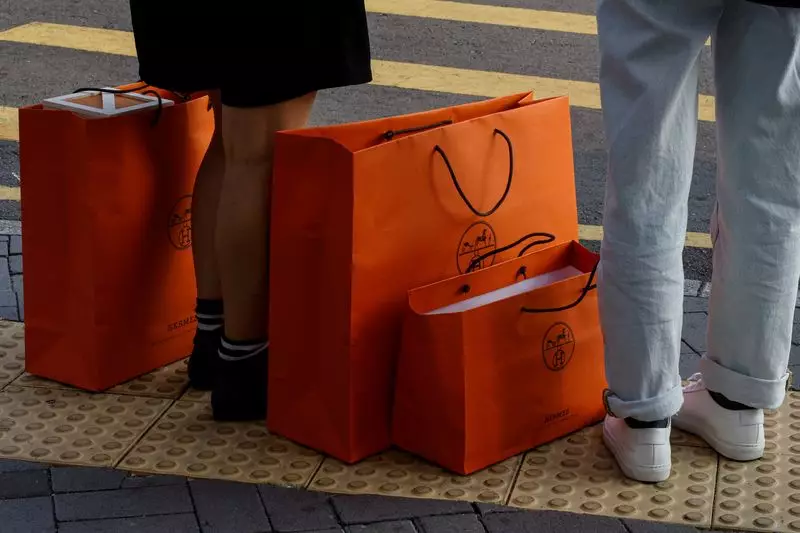In recent months, the luxury market has faced increasing scrutiny as geopolitical tensions between Europe and China have escalated. Investors are now grappling with the implications of the European Union’s decision to impose tariffs on electric vehicles (EVs) originating from China, raising concerns that Beijing may retaliate against European luxury brands like Hermes and Dior. While these fears have led to a decline in shares of high-end brands, analysts argue that retaliation against luxury goods is unlikely due to the unique dynamics of the Chinese market.
As reports emerged that China would introduce anti-dumping measures on imported brandy, European luxury stocks experienced a sharp downturn, with companies like LVMH and Kering reporting drops of 2% to 6%. Such movements in stock prices highlight the profound interconnection between political decisions and market performance in the luxury sector. Yet, despite the apparent threat posed by retaliatory measures, experts suggest that targeting luxury goods would undermine China’s own economic interests. The ongoing trade conflict has so far focused on agricultural products, indicating a deliberate strategy from Beijing to minimize direct impacts on consumer behavior within China’s burgeoning luxury market.
China’s Luxury Market: A Strategic Asset
The allure of the Chinese luxury market cannot be overstated; estimates indicate that it will account for 25% of the global luxury sector in the current year. This significant market presence allows luxury brands to thrive domestically and positions them as critical players in China’s economic landscape. The government’s favorable stance towards luxury spending is rooted in a fundamental understanding that such consumption generates valuable tax revenue. Experts believe that any fiscal measures that would inadvertently drive Chinese consumers to make luxury purchases abroad would conflict with government objectives to retain spending within the country.
The Role of Hainan as a Duty-Free Hub
One prime example of China’s commitment to the luxury sector is Hainan, which has emerged as a major duty-free shopping destination. The establishment of this hub was driven by a recognition from policymakers that domestic luxury spending benefits the economy while simultaneously providing an alternative to overseas purchases. By fostering an environment conducive to luxury retail, the Chinese government aims to counteract the allure of foreign markets and sustain local growth. Analysts underline that efforts to increase prices of imported luxury goods through tariffs would be counterproductive by incentivizing consumers to seek out less expensive options elsewhere, defeating the purpose of maximizing domestic luxury sales.
Both China and European nations seem to have a vested interest in avoiding a full-scale trade war. The economic repercussions of such a conflict could devastate both markets. Professor Albert Hu emphasizes that the careful targeting of retaliatory measures by China indicates a desire for negotiation rather than confrontation. As the luxury goods market plays such a central role in both economies, targeting it with tariffs risks escalating tensions to levels neither government is equipped to handle. The rationality of imposing tariffs on luxury items, particularly when they command high price points such as $2,000 handbags, is called into question, as the notion of dumping these products appears illogical.
As the discourse around luxury goods in the context of trade tensions continues to evolve, the overarching sentiment leans toward caution. Companies operating in the luxury sector have braced themselves for potential ramifications, yet the fundamental economic realities suggest that both China and Europe will strive to maintain a balance that avoids unnecessary provocations. As players in this delicate landscape navigate the challenges that accompany trade spats, the resilience of luxury brands may prove to be a stabilizing force amid the churn of global commerce. Ultimately, the focus should remain on fostering cooperation and understanding rather than exacerbating existing conflicts, ensuring that the luxury market can continue to flourish in an increasingly complex world.

